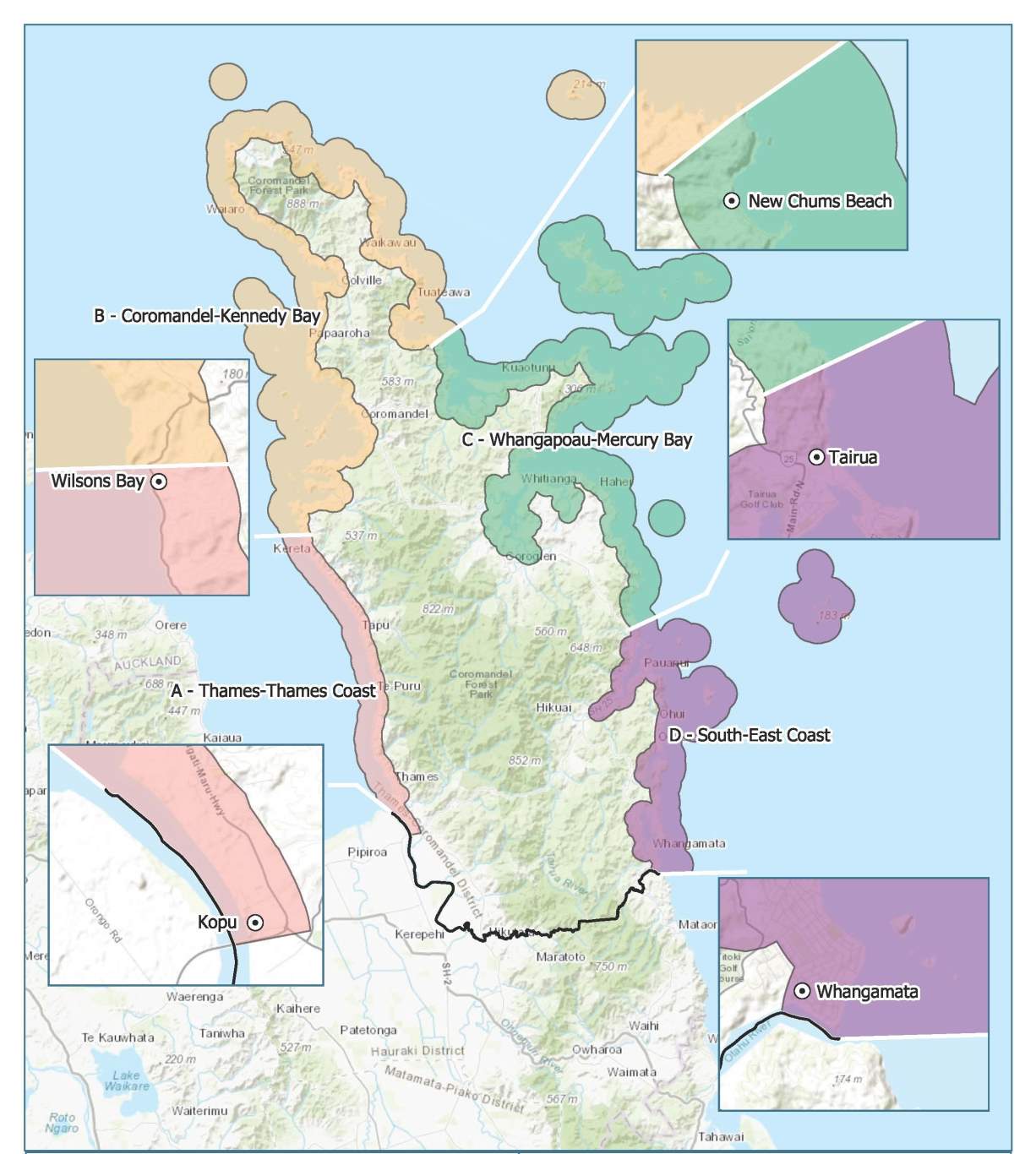Study area and coastal assets
The Coromandel Peninsula extends 85km north from the eastern corner of Waikato and west of the Bay of Plenty on Aotearoa New Zealand’s North Island. It is 40km wide at its broadest point and almost its entire population lives in towns and communities on the narrow coastal strips facing the Hauraki Gulf (on the west coast) and the Bay of Plenty (on the east coast), predominantly in the southeast and southwest. Only five towns have populations of over 1000 people (Coromandel, Whitianga, Thames, Tairua, and Whangamatā) and, of these, only Thames and Whitianga have populations of over 5000 people.
The Peninsula is a very popular holiday destination, having high natural and amenity values located close to major population centres in the Auckland, Waikato and Bay of Plenty regions. Holiday settlements are common at beaches along the coast, with over 75% of all eastern Coromandel beaches being either developed or partially developed (Environment Waikato, 2002[1]).
The geographical extent of the project’s study area comprised the entire Thames-Coromandel District shoreline, including its estuaries; defined in the southwest by the Waihou River and Kopu Bridge (the border with Hauraki District Council (HDC)) and to the southeast by the Otahu River (also the border with HDC). Inland the study area encompassed the area of predicted coastal inundation (based on a 1-in-100-year storm event) in 2120; where, for the purposes of the project, year one was taken to be 2020.
Given its nature, the project considered assets for which other government agencies have responsibility (e.g., State Highway 25 (SH25)) and some of the CAPs advocate action relating to these assets (e.g., maintenance and enhancement overtime of the protection provided to the Thames Coast Road). While the pathways are not statutory, they should be a key consideration for all entities that provide services across the Peninsula going forward.

Footnotes
- 1 Environment Waikato (2002). Coromandel Beaches: Coastal Hazards and Development Setback Recommendations. Technical Report 02/06.